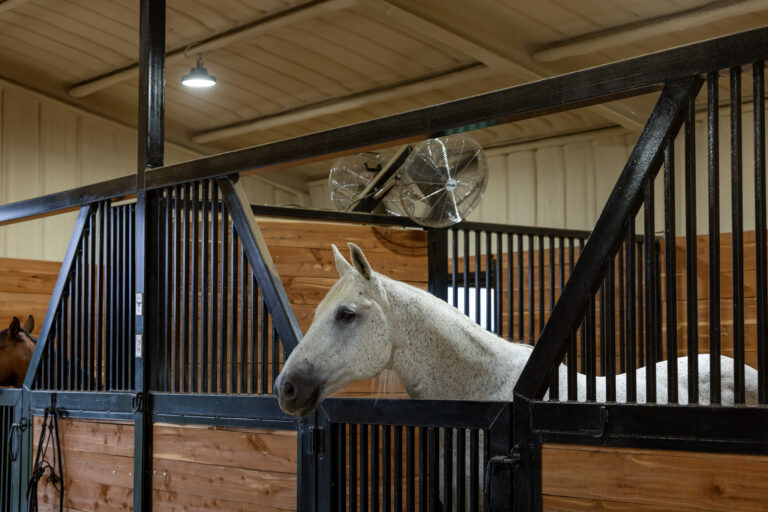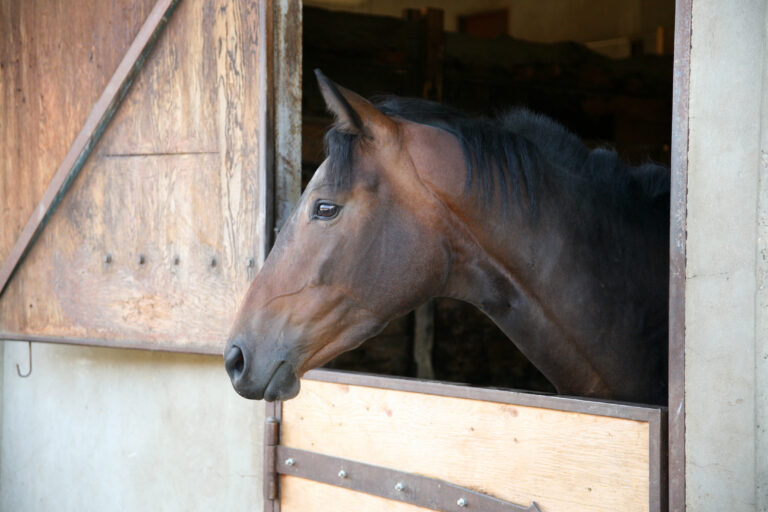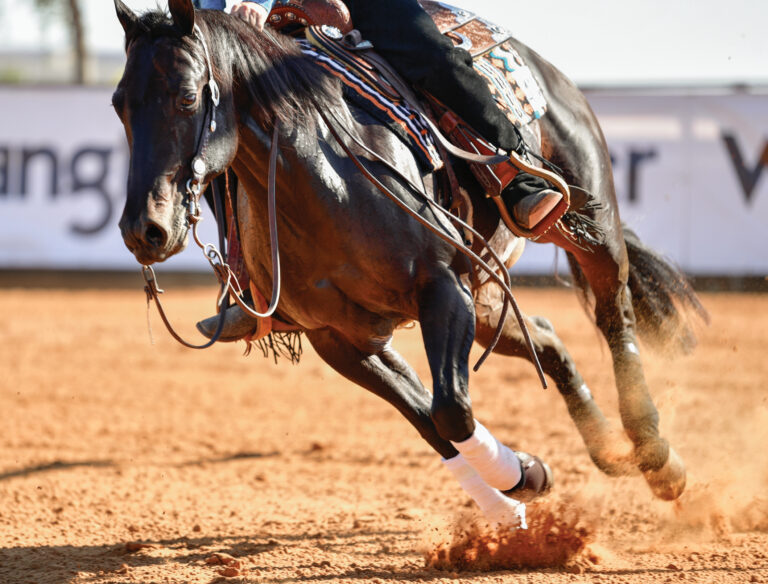Once Mother Nature has clothed your horse in his winter haircoat, weight loss, wounds and skin infections are harder to recognize than when his coat was short and slick. Here are some tips that’ll help you uncover–and prevent–winter grooming problems through the cold months.

Maintain Skin Health
Most winter skin conditions result from a dirty haircoat, which gives bacteria and fungi a foothold. Keep your horse’s skin healthy by vigorously currying his body daily. In addition to lifting dirt and skin debris to the surface, it’ll enable you to feel any diminishment in the fat layer over his ribs, indicating weight loss, and any bumps or clumpy hair that could signal a wound or skin condition.
Insider tip: For quick and easy dirt removal after currying, spray your horse’s body, mane, tail and legs with a non-silicone hair-care product, such as Cowboy Magic, then follow with a soft finish brush or vacuum. (ShopVacs are inexpensive and work great.) Bonus: The slippery finish will help make dried mud easy to remove next time.
Treat Your Horse to a Bath
If you have access to a draft-free area, treat your horse to a weekly hand-wash: Add a splash of Vetrolin (or your favorite body wash) to a bucket of warm water; apply to one body section at a time using a dampened sponge; towel dry. (Note: Not recommended in below-freezing temperatures, unless you have a heated barn.)
Head here for tips on how to give your horse a cold-weather bath.
Insider tip: If your barn doesn’t have hot water, use a wand-like bucket heater in a 5-gallon bucket. Most stores that sell stock-tank heaters carry them or can order one for you.
Insider tip: Speed the drying process with a human hair dryer (keep it moving to avoid burning your horse’s skin) or an overhead heat lamp.
Take the Offensive Against Scratches
Scratches are skin inflammations on the back of his pasterns) Routinely examine your horse’s pasterns for signs of redness and/or scurf, possible precursors to scratches.
Insider tip: After cleaning and thoroughly drying your horse’s lower legs, apply a liberal coating of Desitin (used to prevent babies from diaper rash) to the back of his pasterns. The ointment will provide a measure of protection from water and mud and soothe any existing irritation.
Insider tip: To further prevent scratches, keep fetlock hair trimmed with a coarse (No. 10) clipping blade.
Let Down His Hair
If your horse wears a tail bag, change it at least every 10 to 14 days, rinsing and reconditioning his tail before rebagging it. This will help prevent excessive hair breakage at the top of the bag.
Maintain Hoof Health
Mud/manure-packed hooves provide the ideal environment for thrush. Clean your horse’s feet daily. Once or twice a week, apply a commercial thrush product, such as Thrushbuster or Kopertox, as a preventive measure.
Insider tip: Make your own anti-thrush solution by mixing one part bleach to two parts water. Be careful not to get any of these products on your horse’s skin (or yours!), as they can burn.
Click here for more grooming tips.



![[Aggregator] Downloaded image for imported item #35942](https://s3.amazonaws.com/wp-s3-horseandrider.com/wp-content/uploads/2025/10/20105738/EDCC-Unbranded-14-300x200-1.jpeg)
